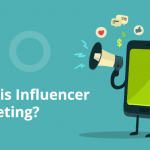With the advent of digital and social media marketing, influencer marketing has become the advertising medium of choice for marketers.
An increasing number of marketers are now using influencer marketing, realizing its short-term and long-term benefits. The right influencer can market your business and increase your word-of-mouth marketing. On the other hand, your brand may experience failing at influencer marketing. Why?
Failing at influencer marketing
Back in the early 2000s, the idea of social media influencers was a new concept, somewhat untried and untrusted by brands. Bloggers were the first real internet stars, with corporations sending young online authors free products in hopes of getting some fresh hype.
Today, things have evolved. Influencer marketing campaigns have become one of the most popular tactics for marketers. Instagram even open the opportunity of Creator Account for Influencers.
With an increasing number of influencers appearing on platforms like TikTok, YouTube, Snapchat, Instagram and others, there are many opportunities for any brand to leverage influencers to their advantage.
But there is a problem: failing at influencer marketing!
Not every influencer program is set up for success, though. When influencer programs fail, it’s often because creators and managers failed in one or more key areas. To understand how and why influencer programs fail (and how to avoid these common pitfalls), keep reading the article.
What is influencer marketing?
What is influencer marketing, really?
It is when someone who is considered an expert in the field, has a high reputation and helps you market your product. These people may also be considered popular in certain markets and may then be seen as a knowledgeable source. Influencers typically have a sway over the things their followers buy.
Important factor: Influence marketing is the development and delivery of advertising messages through influential people, opinion leaders, and not through the brand itself. They influence by example, more so than using word of mouth to explain why someone should buy the product.
This is not a new marketing strategy. In fact, you’ve probably been exposed to many influencer-created content over the past few years. But, with the growth in social media, there has been a great influx of influencer marketing.
This marketing strategy has grown significantly because marketers have realized that an influencer’s reach is quite large. Even those with smaller reach, with high credibility, can have a pretty big influence for a brand.
Also Read:
Virtual Influencers, Human Alternatives in the Spread of Coronavirus
Why is Influencer marketing so important?
Now that you understand the basics of this concept, it’s understandable to wonder why use influencer marketing for your brand?
The practice of promotion through an influential public figure is not new. But in the past it was quite transparent – although the advertisements corresponded to the patterns of authority and sympathy, it was obvious that it was paid and inauthentic. The closest relative of the current advertising influence is product placement in TV shows and movies.

Dozens of studies prove that millennials do not trust traditional advertising. And not only millennials, although they are the most difficult to access by traditional means. There is plenty of evidence that most demographic groups do not trust advertising messages. In short, we want brands to become more authentic.
This trend affects not only print and television advertising. Traditional online advertising formats are also not always effective. This does not mean that all advertising has become useless (of course not), but banner blindness and a wave of consumer mistrust, along with an increase in competitive advertising costs, have led to a decrease in the effectiveness of traditional campaigns.
With the loss of trust in advertising and the growing influence of social networks, what we call today “influence marketing” has emerged. This method is less transparent in motives, but more authentic. Failing at influencer marketing may cause irreversible damage to your brand and business.
Why is your brand failing at influencer marketing?
Though it seems easy, many brands–both big and small–often get it wrong. Before you can execute a successful influencer marketing campaign, you should understand why many brands are unsuccessful with them.
Here are the some common reasons why brands fail at influencer marketing.
1. Poor Influencer Selection
As influencer marketing matures, it’s becoming less of a novelty and more of a key part of most marketing plans. There are thousands of influencers across Instagram, YouTube, Snapchat, Facebook, musical.ly, live.me and more.
It’s imperative that marketers partner with the right influencers for their campaigns. That they meet their choices carefully, that they cultivate lasting relationships with their influencers, and that they allow influencers some degree of creative control to ensure the best results.
Influencers come in many forms. Some of the most popular influencers may have incredible reach but speak to an audience that’s outside of a brand’s core demographic.
Some influencers are extremely popular but are embroiled in controversy that makes them a risk for brands. Brands must choose and vet influencers carefully, taking into consideration how influencers create and communicate and whether or not there’s potential for an ongoing partnership.
Also Read:
TikTok Famous accounts : 15 Most Followed Accounts on TikTok
Why brands are failing at influencer marketing?
2. Engagement remains essential, not the followers
If you want to get the most from an influencer marketing campaign, it’s important to consider the problems that exist today.
Social Media Engagement is the number one metric that brands depend upon to determine the success of a campaign. The value proposition of an influencer is determined by the percentage of impact upon their audience, not the size of their audience.
3. Micro-influencers?!
The nature of influence is changing between demographics, and in the case of companies trying to market to Gen-Z (and everything that comes after), micro-influencers may be the best option. They are also a great option when finances are particularly tight, but the campaigns still need to get done.
Micro-influencers are people who have between 1,000 and 40,000 followers on a single social platform, who have specialist followings that they heavily engage with.
Many have risen from virtual obscurity to being nearly as loved as celebrities due to their content on the most popular social networks. In many cases, micro-influencers are happy to work with brands for free, or in exchange for samples of products/free trials of services.
4. Popularity is not the same as Influence
In B2B marketing, customers want to see more than just famous talking head. On the other hand, they want to see themselves, or subject matter experts that are their peers, in the content that brands are promoting.
Focusing solely on popularity drives awareness, but not engagement or conversions!
Why are you failing at influencer campaigns?
5. You are not Providing Creative Freedom
A lot of time and money goes into running influencer marketing campaigns. So it’s no surprise that brands may expect influencers to do exactly what they want for the money they’re paying them. For this reason, brands often tell their influencers not only what to say, but also how to say it. This is a major mistake.
If you control your influencer’s voice, chances are that your influencer marketing campaign may fail miserably. Too much control makes your influencer’s content sound unusual and inauthentic, and minimizes your influencer’s authority over his/her own audience.
Try to work closely with your influencers. Involve them in all campaign-related meetings and discussions, and allow them to share their creativity. Value their opinion–co-creating content is one of the best ways to make your campaign look genuine.
6. loosing Patience
You can’t rush or force a relationship. You can take steps and do certain things to help it along, and to try to make sure that it grows in a positive direction, but ultimately you have zero control over that relationship.
It’s a mutual state of existence which requires buy-in from both parties – you and the influencer.
7. Poor management
The marketing space changes and evolves quickly, and marketers who fail to invest proper time and research into influencer trends and tactics may find themselves with last-minute, fragmented, and ineffective influencer marketing efforts.
Effective influencer program management requires marketers to devote and prioritize the proper resources to a crafting solid influencer programs.
Also Read:
Instagram Marketing Tips : a Complete Guide to Instagram Marketing
Why some marketing campaigns gone wrong?
8. Confusing Influencer Advertising with Influencer Marketing
- Influencer advertising is simply paying them to post content for you on a platform like Instagram. This is simple and transactional – newbies do this without thinking through who they want to reach and what they hope to achieve. As a result, many lose money.
- Influencer marketing, by contrast, is a high touch strategy that requires careful relationship building.
Conclusion
If you wish to make your influencer marketing campaign successful, you should definitely avoid these mistakes, as they are the most common reasons why brands are failing at influencer marketing.












